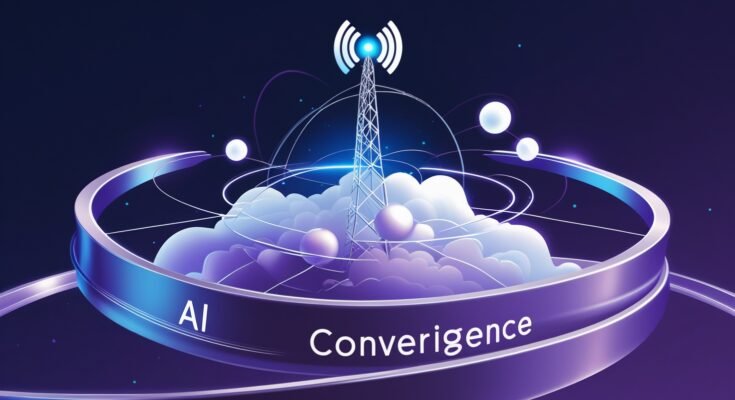he pace of technological change is reshaping whole industries and the telecommunications industry is no different. The convergence of Fifth Generation (5G) wireless technology and Artificial Intelligence (AI) is one of the most transformative trends that is defining the future of telecommunications. AI and 5G, collectively are more than improving how networks work—they are redefining how we communicate, connect and create.
Unlocking New Potential: The Synergy of The AI and 5G
Where 5G offers ultra-fast data rates, low latency, and connections for billions of devices, AI provides the intelligence that these increasingly intricate networks will require for networking and security. Each one is potent on its own. Together they provide a core foundation for the next wave of digital infrastructure.
Intelligence Network Management
The challenges of handling the huge amount of data and devices grow exponentially as 5G networks expand. Through AI, telecom operators can down automated network monitoring, predictive maintenance and defect identification. Using machine learning techniques to analyse live traffic patterns and user behaviour, it is possible to optimise resource allocation and bandwidth utilisation, enhancing overall performance while reducing cost and energy consumption.”
For example, AI-based algorithms which can predict where demand will spike and dynamically modify network resources are deployed in order to provide seamless service. Such automation is critical to preserving Quality of Service (QoS) within a 5G world that is increasingly populated with smart cities, self-driving cars, and large scale IoT deployments.
Enhancing Customer Experience
Virtual assistants and chatbots with AI capabilities are shaking up telecom customer service. Using NLP & Machine learning, telecom firms can provide 24/7 support, resolve issues faster and suggest tailored solutions. At the same time, the use of predictive analytics enables providers to predict customer demand and proactively send offers to reduce churn and increase satisfaction.
AI-based services can be more efficient and effective using 5G technology, which offers higher speeds and lower latency, taking the user experience to the next level.
Enabling New Service and Business Models
There are totally new business opportunities being created as the AI and 5G converge.” In sectors like smart manufacturing, augmented reality (AR), remote health care and connected cars, AI and 5G deliver the speed, intelligence and real-time responsiveness that make these real-time applications possible.
For example, in autonomous driving, 5G supports high-speed data exchange between cars and with infrastructure, and AI processes the data of sensors and makes instant decisions while driving on the road. This relationship is instrumental for security and efficiency.
AI is now being considered by telecom companies for dynamic pricing and fraud detection — even content generation — which can unlock new revenue opportunities and reduce operational risks.
A Challenges Ahead
Though the integration of AI and 5G boast” their great promise, many open challenges need to be addressed. Privacy can be a concern, especially given that the network is being made increasingly intelligent and data driven. AI decision-making must be transparent and comply with regulations.
Looking Ahead: A smarter and Faster Connect World
It’s evident that the combination of AI and 5G is much more than an innovation per se, it’s rather a trigger for the next rounds of digitalization. With the proliferation of converged networks by telecom operators, businesses and government we will see more resilient, adaptive and smarter networks that will drive the innovations of the future.
From transforming customer service to enabling smart cities and connected industries, the AI–5G partnership is poised to define the telecom landscape for many years to come. Those who harness Those that realise its value today will be the masters of the connected tomorrow.




